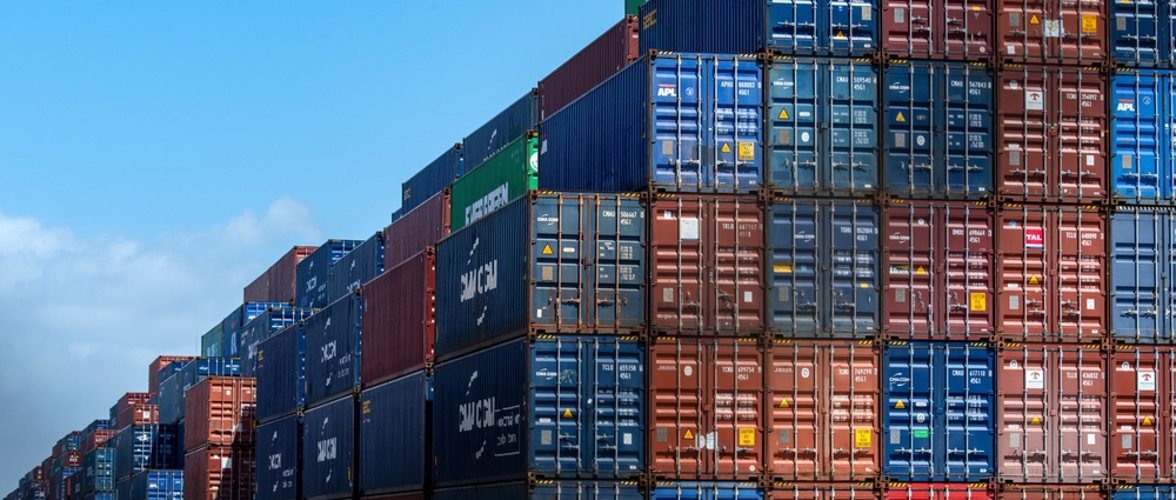Corporate Decision-Making in the Fog of the COVID-19 War, The Final Installment
This is the final installment of this mini-series. Here I introduce the final two fundamentals while providing a summary check list to help your organization assess how adept you are in dealing with these time-tested basics.
Remember: these factors always matter, regardless of where we sit in an economic cycle.
However, they carry considerably more weight during downturns or when we face unprecedented external shocks.
Fundamental #8: Grasp the Many Nuances of Supply Chain Shocks
Recently, concerns have mounted over disruptions in supply chains and their damaging effects on the manufacture and distribution of goods. These disruptions have been evident in a wide variety of industry sectors, creating a disquieting source of uncertainty for credit-providing enterprises as well as businesses with suppliers and buyers up and down the global economic food chain.
As seen in Chart 1, supply chain disturbances can arise from relatively commonplace forces like US-China trade disputes or Brexit. They can also emerge unexpectedly from noneconomic, Black Swan events such as natural disasters or pandemics.
Chart 1: Supply Chain Risks Can Arise from Commonplace Economic Shocks or Black Swan Events

Global supply chains have been exposed to both types of these shocks the past few years. It is necessary to distinguish and isolate these forces as their durations and severity can be vastly dissimilar, influencing the potential shape and likelihood of industry specific recoveries.
Think of how many restaurants were suffering prior to COVID-19 amid weakening economies in many countries, a factor that was exacerbated and made more turbulent by mandated closures, reopenings and fresh directives again requiring closures.
Full Service Restaurants in the UK (source: IBISWorld)

The Knock-On Effects of JIT During a Pandemic
There is another, somewhat obscure chapter to this story, an interesting twist useful to this discussion. Consider the widespread hording of household paper products, like bathroom tissue and paper towels, as panic buying ensued, induced by the spread of the coronavirus. According to the August 21 Wall Street Journal, in America more than 20% of household paper products were out-of-stock as of August 9, 2020. This was not solely the result of COVID-19, but rather decades long supply chain management efforts designed to minimize excess production capacity and conserve on costly inventory holdings. The reality? There is an ingrained inability to restock many goods following either economic or noneconomic shocks.
Sanitary Paper Manufacturing in the US (source: IBISWorld)

Astute readers will recognize this phenomenon as the just-in-time (JIT) production scheme, largely credited to Toyota’s Production System (TPS) and oft-referred to as “lean manufacturing.” The decades long legacy of JIT systems has lost some of its luster lately as trade disputes and the pandemic have bogged down intricate supply chains that connect manufacturers, distributers, and customers. According to a January 2020 paper by McKinsey & Company (“Supply Chain Risk Management is Back”, by Knut Alicke and Anna Strigel) some manufacturers operating with JIT systems are examining ways to mitigate impacts of production delays by “…assessing different transport routes and reviewing logistics contracts or have decided to build up stock and extend warehouse capacity.” New tariffs related to US-China trade disputes are particularly profound, as “…some companies have decided to localize their footprints or even to relocate their production facilities.”
One needs to keep a watchful eye on this emerging trend, and its bearing on the course of future globalization. Should this force gain momentum, it has the potential of suffusing throughout the global economic and financial system, morphing the basic laws of how global commerce is conducted. My next mini-series (on globalization) will investigate this issue.
Upstream and Downstream Impacts
Now consider a simple illustration of a supply chain. In Chart 2, I list some of the key supplying and buying industries for auto parts manufacturers (this list is not intended to be exhaustive.)
Chart 2: Key Supplying/Buying Industries for Auto Parts Manufacturers

It is well known that supply shocks resonate and can strike multiple segments in a supply chain hierarchy. For instance, trade disputes can impact steel and aluminum industries, roaring downstream to auto parts manufacturing. Related trade tensions can also be felt directly by auto parts producers, a real-world double whammy. And, since the auto parts industry is highly globalized, spillovers from country-to-country can result. What an intricate web globalization has weaved!
There is another somewhat arcane consequence of a supply shock rolling downstream: Increased competition between substitute products and services (aka, market fundamental #7 from my previous newsletter). In Chart 2 price shocks related to trade disputes can shift demand from auto parts wholesalers (who supply auto mechanics) to auto parts stores (who sell to do-it-yourselfers keen on saving money during difficult times).
Finally, there is the issue of granularity. While industry classifications like NAICS, ANZSIC and UK SIC can be useful, they are often not sufficiently granular. I suggest familiarization with either the Global Product Classification (GPC) system or the Harmonized System (HS). GPC classifies products into categories based on their key properties as well as their relationships to other products. HS is a customs-based nomenclature for the classification of traded goods.
Fundamental #9: Be Alert of Exposures to Concentration Risk Using Enterprise Risk Management
Enterprise risk management (ERM) is a plan-based framework that seeks to identify, evaluate, and prepare an organization for any hazardous external events that may impede an organization's operations and objectives or threaten its sustainability. The discipline not only requires corporations to recognize all the risks faced and determine which risks to actively manage, but it also involves devising a plan of action for mitigating risks proactively.
ERM is a relatively new and evolving strategic tool that has found its way into the regulatory environment in many nations. It is rapidly taking hold in many types of commercial enterprises. For our purposes, the framework provides a holistic way of managing various kinds of concentration risk.
Chart 3 shows some of the most critical forms of concentration risk. A comprehensive study of this subject is found in “Worried About the End of the Credit Cycle? Concentration Risk Revisited,” (The RMA Journal, May 2019, by Rick Buczynski and Kent Kirby).
Chart 3: ERM and Concentration Risk

Today, I will focus on the credit/financial side. Supply chain concentrations were introduced in the previous section.
Single-Name Concentration
- Are you unduly exposed either through financing or buying from/selling to a single entity?
- Or perhaps investing in a single company?
- If so, how are you coping with this challenge?
- Do you have someone in charge of monitoring single-name concentrations?
Industry Concentration
- Are you excessively involved in particular industry or industry group, for example auto parts manufacturing or travel and tourism?
- Have you identified latent industry risks and red-flagged overexposed segments?
- If so, how?
Supply Chain Concentration
- Do you adequately embrace the environment in which your business partners operate?
- Who they buy from? Who they sell to?
- Where do they source credit?
- Are you exposed upstream/downstream or in both directions resulting in unintended concentrations?
Common Factor Concentration
- Do you understand which economic drivers are most critical to the health of your business partners? Energy prices and international trade policies are clear factors currently in play.
- Consider an example of the impact of an increase in home mortgage rates on industry performance, as shown in Chart 4.
Chart 4: Some Economic Drivers May be Dominant in Determining Your Concentration Risk

Special Factors
Have you considered other forms of concentration risk? This is a hodgepodge of factors, the most common being the geographic concentration of your corporate partners or your end market, and your product concentrations. An example is selling too much of the same product in the same location. Special factors are often taken-for-granted, presenting debilitating, clandestine risks.
Market Fundamental Summary and Check List
Table 1 delineates the nine fundamentals of this mini-series. Might I suggest ranking these 1 to 9 to see how well-equipped your organization is in dealing with these basics.
Table 1: Are You Proficient in Mastering the Fundamentals?

What's Next?
In my next newsletter, I will commence a new mini-series on globalization. Important stuff for all of us in these unusual times.
Tune in…
Best regards,
Rick Buczynski, Ph.D.
IBISWorld Chief Economist









